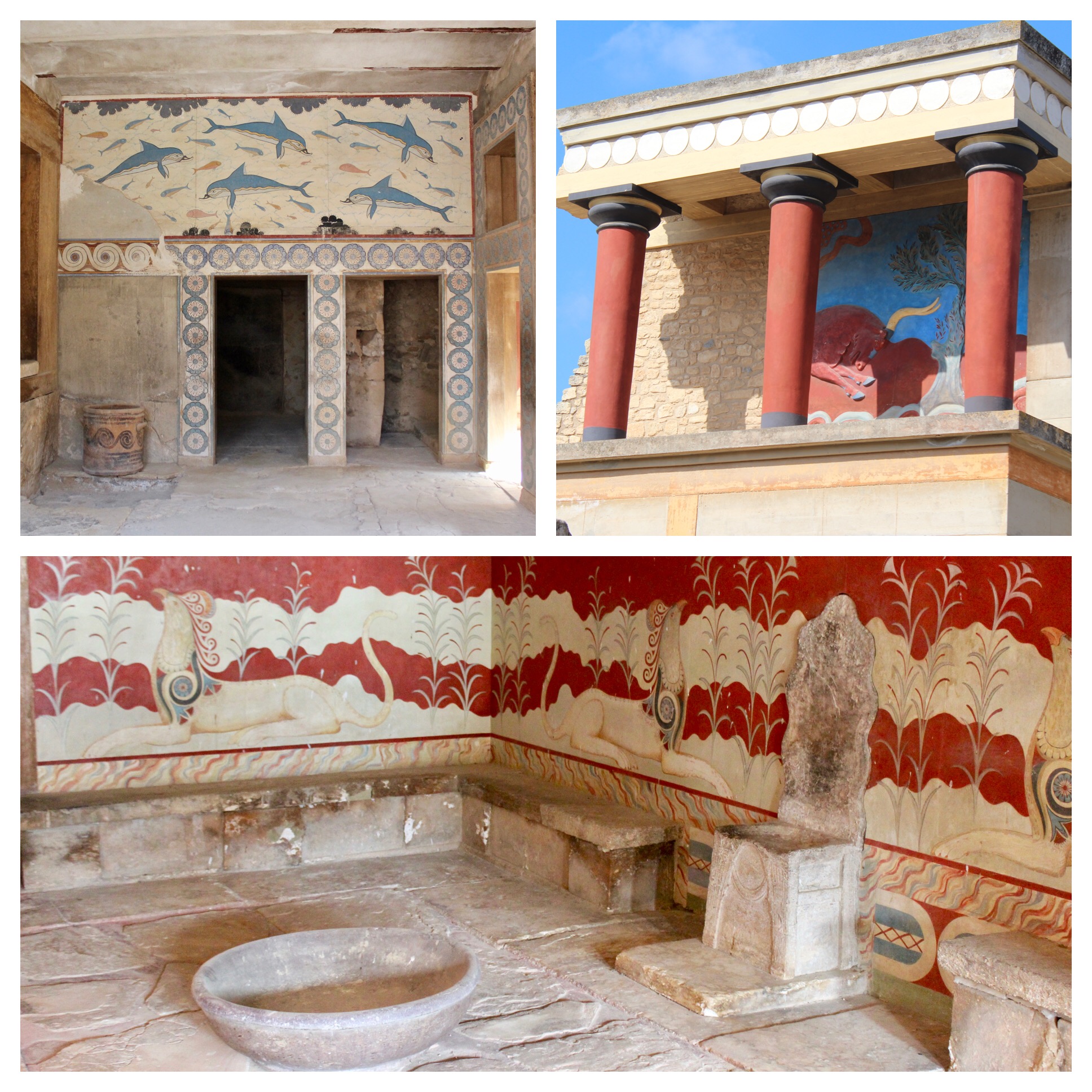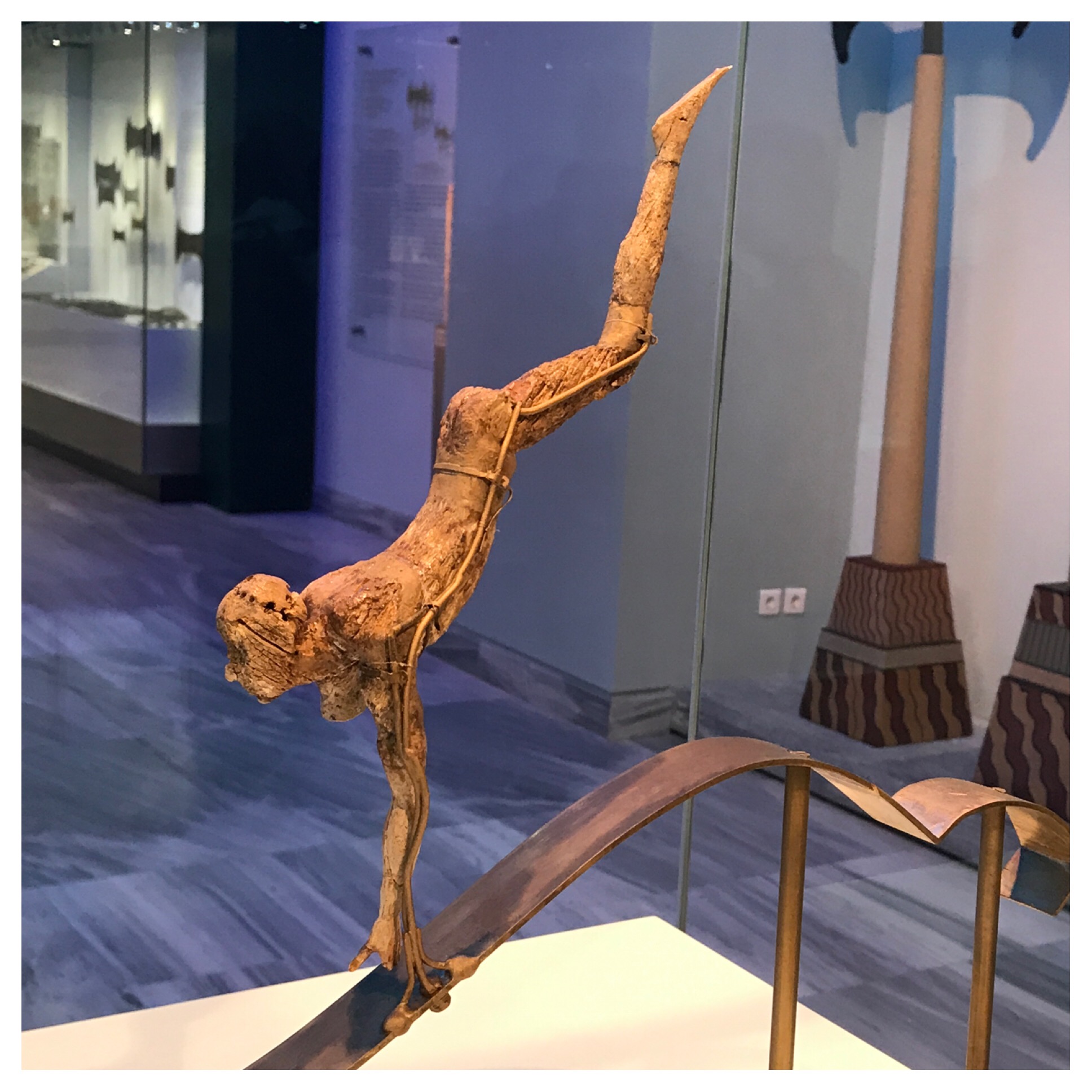




Day 92 of 111. Iraklion, Greece
We visited two sites today in Crete, the Palace of Knossos and the Heraklion Archeological Museum. These are closely related because on the palace site, the frescos and most of the artifacts have been removed to the museum. This site has ruins that date back to the Minoan Civilization, 1700 years B.C. The name of the civilization was given its name from King Minos, although the culture was really matriarchal, meaning that the Queen (Pasiphae) was the real ruler.
This site was discovered by a Greek businessman in 1878, but systematic excavations began in 1900 under Arthur Evans, then Director of the Ashmolean Museum in Oxford and was completed in about three years. About 20 years later, Evans began a project of reconstruction. This process always brings different opinions by different people. Some people argue that there was not always enough archeological evidence to back up the reconstruction ideas of Evans. On the other hand, the reconstructions make the ancient ruins more meaningful. It has certainly increased interest by visitors. The Palace of Knossos is the second most visited site in Greece. The colors of the columns and frescos come from excavated remnants of the frescos. For example, the dolphins were from frescos in the Queens chamber. The picture on the wall is a recreation, the picture of two dolphins in the center group of pictures shows the dolphin remnants from the original fresco.
The bull was a sacred animal in Knossos. Stylized bull horns adorned the tops of many of the buildings of the palace. The three-columned porch with the relief bull and olive trees was near the North Gate where all visitors to the Palace entered. The red and white decorated throne room was interesting because of the stone throne with the seat carved out for comfort and a large bowl that was filled with water for cleansing before speaking to the ruler. The frescos on the walls depict griffins, but the wings were not shown to keep the griffins from flying away.
The mythological story of the Minotaur probably came from the fact that the bull was a sacred animal in Knossos and was often sacrificed. One amazing athletic feat that was popular in Knossos was Bull Leaping. Athletic men and women would jump at a charging bull, grab the horns and somersault over the back of the bull. The decoration on the tall thin vase depicts the story of Theseus defeating the Minotaur.
The archeological museum contained many well-preserved and interesting artifacts. The Snake Goddess, a 7-inch tall figure, is an iconic symbol of the Minoan civilization. From the small, we also saw huge ritual jugs where the olive oil tribute was poured. I especially liked the cat-like figure through which ritual liquids were poured, the small ritual double axes made of gold, and the ceramic bathtubs with great decoration.
April 7, 2017
Paul Groves